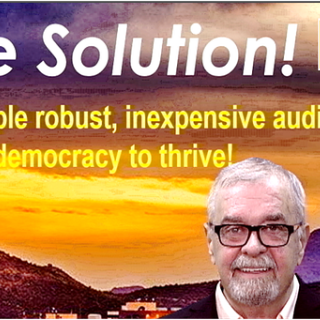Advertisement
Re/Descheduling – What It Is and Why It’s Important
It felt like a marathon, right? The two-year trek spanning 2021 to 2023, which led to passage of Ohio Issue 2 (the Regulate Marijuana Like Alcohol initiated statute), moved through many twists, turns, ups, and downs before arriving at a new age. No longer must we look over shoulders, hide our stuff, or whisper our canna-conversations. We’re free to be who we are … almost.
Federal law, the root of prohibition, remains a different matter. Despite Issue 2, if you find yourself in possession of cannabis on federal land (parks, courthouses, etc.), you are subject to federal penalties. They. Have. Not. Changed. And they are harsh. The War on Drugs, including cannabis, is not yet over. That two-year trek was a walk in the park compared to the last 50 years of prohibition.
Over 30 pieces of federal legislation marshalled in the drug war. While Issue 2 dismantled much of it in Ohio somewhat, dozens of federal laws must be repealed or revised to truly end our nation’s longest and most expensive war. These include mandatory minimum sentencing, asset forfeiture, drug free workplace, eviction from public housing, and more. And, because of the Supremacy Clause in the U.S. Constitution, federal law supersedes state and local laws. The feds enacted ‘em, and feds must repeal ‘em. Beginning with President Joe Biden and the Controlled Substances Act (CSA), it seems like they are beginning to do just that. Here’s the story in the form of a deep dive Q & A:
What is the Controlled Substances Act?
One of the primary forces behind federal cannabis prohibition has been Title II of the Comprehensive Drug Abuse Prevention and Control Act of 1970, aka the Controlled Substances Act (CSA), signed into law by President Richard Nixon. This legislation regulates pharmaceutical and non-pharmaceutical drugs and other substances as “controlled substances” that purportedly pose risk of abuse and addiction. The Act covers the manufacture, importation, possession, use and distribution of narcotics, stimulants, depressants, hallucinogens, anabolic steroids, some chemicals, and yes, cannabis/marijuana.
What is scheduling?
“Scheduling” is a classification system used by the CSA to define the harms and evaluate the safety of substances regulated under existing federal law. Drugs or substances shown to have harm, abuse, and addiction potential places them in five different categories (schedules) based upon: 1.) abuse potential, 2.) accepted medical applications in the U.S., and 3.) safety/potential for addiction.
Who determines scheduling?
The Drug Enforcement Administration (DEA), under the U.S. Department of Justice (DOJ), in conjunction with the Department of Health and Human Services (HHS), of which the Food and Drug Administration (FDA) is part, determine which drugs or substances cause risk of harm, addiction, and abuse. Those deemed to not hold those risks are unscheduled.
What are the schedules?
The CSA contains five “Schedules” (Roman Numerals I-V), with “I” as most restrictive and “V” as least restrictive based on the above factors. Schedule I: no currently accepted medical use and a high potential for abuse. Schedule II: high potential for abuse, with use potentially leading to severe psychological or physical dependence. Schedule III: moderate to low potential for physical and psychological dependence. Schedule IV: low potential for abuse and low risk of dependence. Schedule V: lower potential for abuse; preparations containing limited quantities of certain narcotics.
What drugs comprise these schedules?
Schedule I: cannabis, heroin, LSD, psilocybin, peyote. See below. Schedule II: cocaine, fentanyl, methamphetamine, oxycodone, Adderall, Ritalin. Schedule III: acetaminophen with codeine, anabolic steroids, ketamine, testosterone. Schedule IV: Xanax, Valium, Ambien, Tramadol. Schedule V: Robitussin, Lyrica, Lomotil, Parepectolin (paregoric). Listed here are all scheduled drugs. Note that hemp – defined as marijuana or marihuana containing no more than 0.3 percent ∆9-THC on a dry weight basis – was removed from the CSA in 2018 with passage of the Farm Bill.
What’s so bad about Schedule I?
This category presents a host of problems for substances haunted by that designation. For one, some substances do not meet its criteria. Schedule I drugs:
- Cannot be prescribed by medical practitioners.
- Banned from hospitals, care facilities, doctor’s offices, etc.
- Constrict research. For decades, the National Institute of Drug Abuse (NIDA) has been the sole source of marijuana for research purposes.
- Bar cannabusinesses from taking ordinary business deductions (280E) on tax returns. Applies to Schedule II as well.
- Disqualify cannabusiness from obtaining loans, insurance, bankruptcy, banking services.
- Forbid advertising in newspapers, magazines, the Internet, and other media.
- Bar users from owning firearms.
- Come with significant federal penalties for possession, cultivation, marketing, or sales.
- Keep promising therapeutic substances off the market by fiat, instead of supportive research.
- Example: cannabis was shown to have anti-cancer properties in 1975. Since passage of the CSA in 1970, 27 million Americans have died of cancer; over 600,000 will likely die of this disease in 2024. As a Schedule I substance, cannabis has been wholly unavailable to medical practice for over 50 years.
Are all cannabis-related substances Schedule I?
No. Listed in the ‘substance’ category called “Tetrahydrocannabinols” are THC, Delta-8, Delta-9, dronabinol, and marijuana extract, all designated Schedule I. FDA-approved synthetic THC trademarked Marinol (dronabinol in sesame oil) is found in Schedule III, while synthetic Cesamet (nabilone) and synthetic oral THC solution (Syndros) both hold Schedule II status. None of the minor cannabinoids (cannabidiol, cannabinol, cannabichromene, cannabigerol, cannabidivarin, etc.) are scheduled. Strangely, even though marijuana was judicially determined to be “one of the safest therapeutically active substances known to man,” its placement in Schedule I was considered “temporary.”
“Temporary”?
Yes. Some lawmakers in 1970 saw the CSA as too harsh, especially for marijuana (spelled ‘marihuana’ at the time). The appropriate schedule, they thought, required more research, and on that basis, they formed National Commission on Marihuana and Drug Abuse, aka, the Shafer Commission. Released in 1972, the Shafer report, entitled “Marihuana, a Signal of Misunderstanding”, found that cannabis posed little danger to society and recommended decriminalization. President Nixon, who invented the drug war to go after his enemies – antiwar left and black people – ignored the advice, with some saying that he threw the report in the trash.
Does the CSA apply to the states?
Yes, most states have borrowed, referenced, adapted, or used federal scheduling in crafting their own drug possession statutes. But they don’t have to mirror them entirely. Medical marijuana in Ohio is Schedule II.
Can CSA Scheduling Be Changed?
Yes. Rescheduling can be accomplished by 1.) Congress by crafting, introducing, and passing bills, or 2.) administratively through the Executive Branch by the Attorney General, head of the DOJ, and ultimately, the DEA. Modifications to the CSA can be initiated by the DEA, HHS, the President, or by a petition from a drug manufacturer, medical society, pharmacy association, public interest group, state or local government agency, or an individual citizen. The DEA evaluates petitions and then requests “scientific and medical evaluations” by HHS via the FDA. Once an HHS evaluation is complete, the agency transmits its assessment back to the DEA where it is binding. The DEA administrator in conjunction with the Attorney General makes the final scheduling determination.
Why has botanical cannabis remained Schedule I?
Not for lack of trying. Five rescheduling attempts – all by public interest groups – have been made: 1972 (DEA denied sixteen years later in 1988); 2001 (DEA denied); 2002 (DEA denied 2011); 2012 (DEA denied 2013); and 2016 (DEA denied 2018). The CSA has been amended fourteen times since inception; not one amendment mentioned cannabis.
President Biden initiated reclassification. What does this mean?
As part his 2020 presidential platform, President Joe Biden promised revisions to cannabis policy under the moniker, “no one should be in prison for marijuana.” Toward that end, On October 6, 2022, following the procedures outlined in the CSA, the President asked “the Secretary of Health and Human Services [HHS] and the Attorney General to initiate the administrative process to review expeditiously how marijuana is scheduled under federal law.” For the most part, citizen groups initiated the last five rescheduling attempts. Their lack of success reflects a lack of governmental backing. This time, the request emanates from the top official, and cannot be ignored or summarily rejected.
What did the reclassification request find?
On August 20, 2023, HHS sent its findings from the requested review to the DEA, as required by the CSA’s rescheduling procedures that include an eight factor analysis (8FA). Arriving at these conclusions, the health agency recommended down-scheduling marijuana/cannabis to Schedule III. Each of the eight factors are underlined.
- Actual or relative potential for abuse: “… a relative finding on abuse liability, when comparing marijuana to heroin, oxycodone, hydrocodone, fentanyl, cocaine, ketamine, benzodiazepines, zolpidem, tramadol, and alcohol in various epidemiological databases that allow for some or all of these comparisons, marijuana is not typically among the substances producing the most frequent incidence of adverse outcomes or severity of substance use disorder.”
- Scientific evidence of its pharmacological effect, if known: “… the rewarding responses observed in humans are consistent with the prevalence of nonmedical use of marijuana, which includes abuse of the substance.”
- The state of current scientific knowledge regarding the drug or other substance; “… for purposes of the drug scheduling criteria in 21 U.S.C. 812(b), marijuana has a CAMU [currently accepted medical use] in the United States for: anorexia related to a medical condition; nausea and vomiting (e.g., chemotherapy-induced); and pain.”
- Its history and current pattern of abuse. “… use of marijuana for medical and nonmedical purposes is extensive in the United States, but that its prevalence of use is less than that of alcohol and significantly more than that of other drugs of abuse that are scheduled under the CSA.”
- The scope, duration, and significance of abuse. “… from 2015 to 2020, the rank order of the comparators in terms of greatest adverse consequence typically places alcohol, heroin, and/or cocaine in the first or immediately subsequent positions, with marijuana in a lower place in the ranking.”
- What, if any, risk there is to the public health. “The risks to the public health posed by marijuana are low compared to other drugs of abuse (e.g., heroin, cocaine, benzodiazepines), based on an evaluation of various epidemiological databases for ED visits, hospitalizations, unintentional exposures, and most importantly, for overdose deaths.”
- Its psychic or physiological dependence liability. “Experimental data and clinical reports demonstrate that chronic, but not acute, use of marijuana can produce both psychic and physical dependence in humans. The symptoms associated with both kinds of dependence are relatively mild for most individuals.”
- Whether the substance is an immediate precursor of a substance already controlled. “Marijuana is not an immediate precursor of another controlled substance.”
RECOMMENDATION: Marijuana meets the three criteria for placing a substance in Schedule III of the CSA, as set forth under 21 U.S.C. 812(b)(3): 1.) Marijuana has a potential for abuse less than the drugs or other substances in Schedules I and II. 2.) Marijuana has a currently accepted medical use in treatment in the United States. 3.) Abuse of marijuana may lead to moderate or low physical dependence or high psychological dependence.
Was the HHS analysis fair?
Yes. The analysis dispels many marijuana myths and provides a wealth of factual information. Over 20 databases were analyzed for the information that went into this report. They include:
BRFSS (Behavioral Risk Factor Surveillance System), CMS (Medicare), DAWN (Drug Abuse Warning Network), FAERS/CAERS (Adverse Event Reporting System), ICPS (International Cannabis Policy Study), MTF (Monitoring the Future), NAVIPPRO (https://pubmed.ncbi.nlm.nih.gov/18932173/), NFLIS (National Forensic Laboratory Information System), NEDS (National Emergency Department Sample), NIS (National Inpatient Sample), NPDS (National Poison Data System), NMURx (Survey on the Non-Medical Use of Rx Drugs), NSDUH (National Survey on Drug Use and Health), NVSS-M (National Vital Statistics System-mortality and Drug Involve Mortality), RADARS (Researched Abuse, Diversion and Addiction-Related Surveillance System), Sentinel Distributed Database System (FDA), TEDS (Treatment Episode Data), ToxIC (Toxicology Investigators Consortium Core Registry), YRBSS (Youth Risk Behavior Surveillance System)
Other findings and statistics
- More than 30,000 HCPs (Healthcare Professionals) are authorized to recommend the use of marijuana for more than six million registered patients, constituting widespread clinical experience associated with various medical conditions recognized by a substantial number of jurisdictions across the United States.
- Marijuana contains at least 560 identified natural constituents, including 125 compounds classified as cannabinoids. Most major cannabinoid compounds occurring naturally in Cannabis have been identified chemically, but new and minor compounds are continuously being characterized.
- Marijuana has hundreds of chemovars containing variable concentrations of Δ9-THC, cannabinoids, and other compounds. Thus, marijuana is not a single chemical with a consistent and reproducible chemical profile or predictable and consistent clinical effects.
What might change under Schedule III?
- Patients would be able to possess and use cannabis in hospitals and long-term care facilities.
- Doctors at the Department of Veterans’ Affairs would be allowed to prescribe cannabis to veterans.
- Obstacles preventing cannabis research would be reduced.
- Cannabusinesses could take the 280E tax exemption and deduct ordinary business expenses like any other company.
- Banks and financial institutions, as well as insurers, would be able to work with cannabusinesses.
- Products would become more price competitive and constrict the illicit market.
- Pathway for trademark rights would be smoother.
- Individuals would be permitted to possess and own firearms.
- Cannabis companies would be permitted on stock exchanges.
- “Market consolidation” would be forestalled by fewer mergers and acquisitions.
- Depending on state law, would enable cannabis commerce to cross state lines.
What would NOT change under Schedule III?
- Those 30 pieces of federal legislation that marshalled in the drug war would remain in place unless they have already been repealed by Congress. Note: A number of bills recently introduced in the U.S. Congress attempt to do just that.
- Cannabis would continue to be illegal in all federal jurisdictions, including the state level.
- Herbal, botanical cannabis, for which there is no valid prescribing, would remain illegal.
- Non-prescription marijuana products – like hemp-derived CBD and THC – would continue to operate in a legal gray area.
- Harsh, unrealistic federal penalties would stay unchanged without an act of Congress.
- State-level programs would continue to exist, but remain in conflict with federal law.
- The patchwork of state laws would persist where cannabis is legal in one state, but not in another. Penalties, if any, would continue to vary state-by-state.
- Those incarcerated for cannabis-related activity would remain in jail; prior convictions would not be expunged.
- Non-citizens could still be denied naturalization and green cards, and even deported.
- Drug-free workplace restrictions would remain in place.
- U.S. international treaty obligations that have thwarted other reforms would stay unchanged.
Are there options other than rescheduling?
Yes. Descheduling. Removing cannabis from the federal scheduling scheme altogether. This sounds eerily reminiscent of the decriminalization recommendation by the Shafer report 50 years ago in 1972.
Cannabis does not fit neatly into the CSA. The FDA drug approval process rests on assessing substances as single chemical entities using a rigorous, expensive, and time-consuming process in which time-to-market exceeds 10 years at a cost of $2-3 billion. Marijuana is a plant that is grown, not concocted in a laboratory. Instead of a single entity, the plant itself contains 560 identified natural constituents, many of which have therapeutic properties of their own. Plus, marijuana is a cultural phenomenon that has suffered from inequality, stigmatism, and bias, not to mention the draconian federal penalties for possession and cultivation. Finally, there’s alcohol and tobacco, neither of which is scheduled, both of which cause significant harm. Rescheduling cannabis alone will not mend these problems, nor will it simplify the plant’s approval for marketing.
Twelve U.S. Senators led by Elizabeth Warren and John Fetterman made the case for descheduling cannabis in a January 2024 letter to Attorney General Merrick Garland and DEA Administrator Anne Milgram. They wrote, “Although HHS recommended rescheduling, its analysis could support a decision to deschedule — particularly its emphasis on the fact that marijuana has less adverse outcomes (including less potential of an overdose) and less potential of abuse than substances that are descheduled (alcohol) or scheduled below Schedule III (such as benzodiazepines).”
They went onto write, “Once descheduled, marijuana can still be subject to public health regulations, drawing from lessons learned through the regulation of alcohol and tobacco. And here, the federal government has the rare opportunity to shape the new cannabis industry from the ground up, designing a federal regulatory system untainted by the corporate capture that has influenced alcohol and tobacco regulations.”
Representatives Earl Blumenauer and David Joyce sent a similar letter in support of descheduling last October 2023.
The Cannabis Administration and Opportunity Act, drafted in 2021, and the MORE Act introduced in the U.S. House of Representatives that same year provide a window into what a federally regulated industry might look like. Forward movement of these bills stalled in 2024, an election year. Would a heavily divided U.S. Congress take on cannabis legalization? Doubtful.
The good news is that President Biden’s rescheduling recommendation still represents a monumental step forward, one for which we have been waiting 50 years. It is said that DEA has never kept a drug in Schedule I after HHS recommended removing it. That being the case, after marathon that brought Ohio Issue 2, welcome Schedule III.
You can find a formatted version of this article here.
-----------------------
Mary Jane Borden is a best-selling author, skilled graphic artist, insightful analyst, and award-winning cannabis activist from Westerville, Ohio. During her 40-year career in drug policy, she co-founded seven cannabis-oriented groups, co-authored four proposed constitutional amendments, lobbied for six medical marijuana bills, penned over 100 Columbus Free Press articles, and has given hundreds of media interviews. She is one of the Courage in Cannabis authors, with articles in both editions. Her artwork can be viewed at CannabinArt.com and she can be reached at maryjaneborden@ gmail.com.



